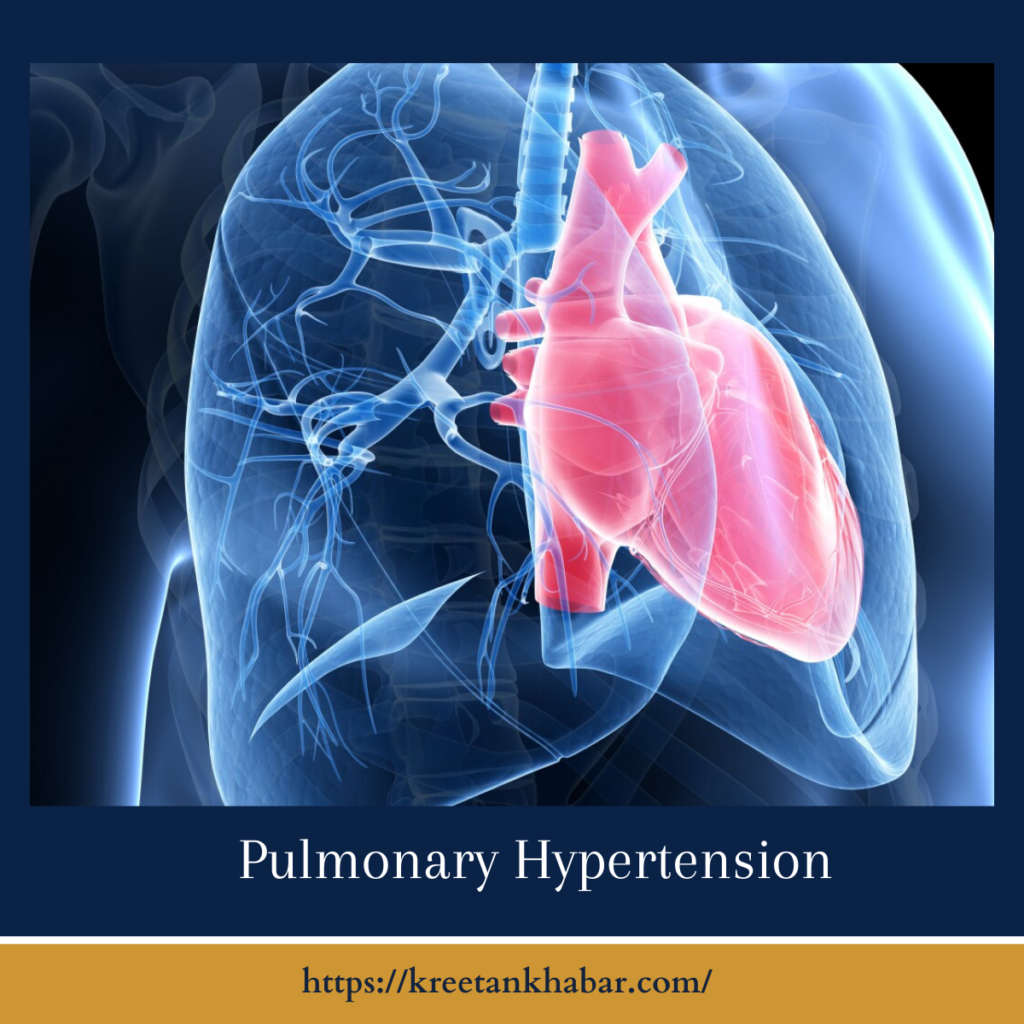Pulmonary Hypertension
Introduction:
In the intricate tapestry of cardiovascular health, a condition silently challenges the normal flow of blood, casting a shadow on the pulmonary arteries. Pulmonary Hypertension (PH) may not be a household name, but its impact on the heart and lungs is profound. Let’s embark on a journey to demystify this veiled struggle, exploring the intricacies of pulmonary hypertension, from its causes and symptoms to the relentless pursuit of effective management.

Understanding Pulmonary Hypertension:
Pulmonary hypertension is a complex condition characterized by elevated blood pressure in the pulmonary arteries, which carry blood from the heart to the lungs. Unlike systemic hypertension, which affects the entire body, pulmonary hypertension specifically targets the vessels of the lungs, imposing a unique set of challenges on cardiovascular function.
The Hidden Culprits:
Pulmonary hypertension can be categorized into different groups based on its underlying causes. Group 1, known as pulmonary arterial hypertension (PAH), involves the narrowing of small arteries in the lungs. Other groups encompass a spectrum of conditions, from lung diseases and chronic blood clots to heart disorders and systemic conditions, all contributing to increased pressure in the pulmonary arteries.
Symptoms:
The Whispering Signs The symptoms of PH may start subtly, often dismissed or attributed to other causes. Early signs include shortness of breath, fatigue, and dizziness. As the condition progresses, symptoms intensify, revealing themselves through chest pain, irregular heartbeat, and swelling in the ankles and legs.
Diagnostic Pursuit:
Diagnosing pulmonary hypertension requires a careful blend of clinical evaluation and diagnostic tests. Echocardiography, a non-invasive imaging technique, offers insights into the structure and function of the heart. Additional tests, such as right heart catheterization, lung function tests, and imaging studies, contribute to a comprehensive diagnostic picture.
Living with Pulmonary Hypertension:
While there is currently no cure for pulmonary hypertension, the landscape of management has evolved, offering avenues for improved quality of life. Medications targeting the pulmonary arteries, lifestyle modifications, and supportive therapies play a pivotal role in alleviating symptoms and slowing the progression of the condition.
The Heart-Lung Tango:
Living with pulmonary hypertension often involves a delicate dance between the heart and lungs. Individuals navigate a tailored regimen of medications, oxygen therapy, and pulmonary rehabilitation to enhance lung capacity and cardiovascular function. Close collaboration with a multidisciplinary healthcare team becomes essential, encompassing pulmonologists, cardiologists, and other specialists.
The Emotional Terrain:
Beyond the physiological challenges, pulmonary hypertension exerts a significant emotional toll. Coping with a chronic condition necessitates resilience and a support network. Patient communities, counseling, and educational resources become invaluable companions on the emotional terrain, offering understanding and connection.
Research and Hope:
The landscape of pulmonary hypertension is continuously evolving, propelled by ongoing research and advancements. Clinical trials explore innovative therapies, providing a beacon of hope for improved treatments and, perhaps one day, a cure. Engaging in research initiatives and staying informed empowers individuals and contributes to the collective pursuit of progress.
Conclusion:
Pulmonary hypertension may cloak itself in subtlety, but its impact on the cardiovascular landscape is profound. Through understanding, early diagnosis, and advances in management, individuals facing pulmonary hypertension can navigate the journey with resilience and hope. As we unveil the veiled struggle of pulmonary hypertension, let it serve as a call to awareness, compassion, and a shared commitment to enhancing the lives of those affected by this complex cardiovascular condition.
Read also : Exploring the Delightful Boost of the Green Tea Shot 2023